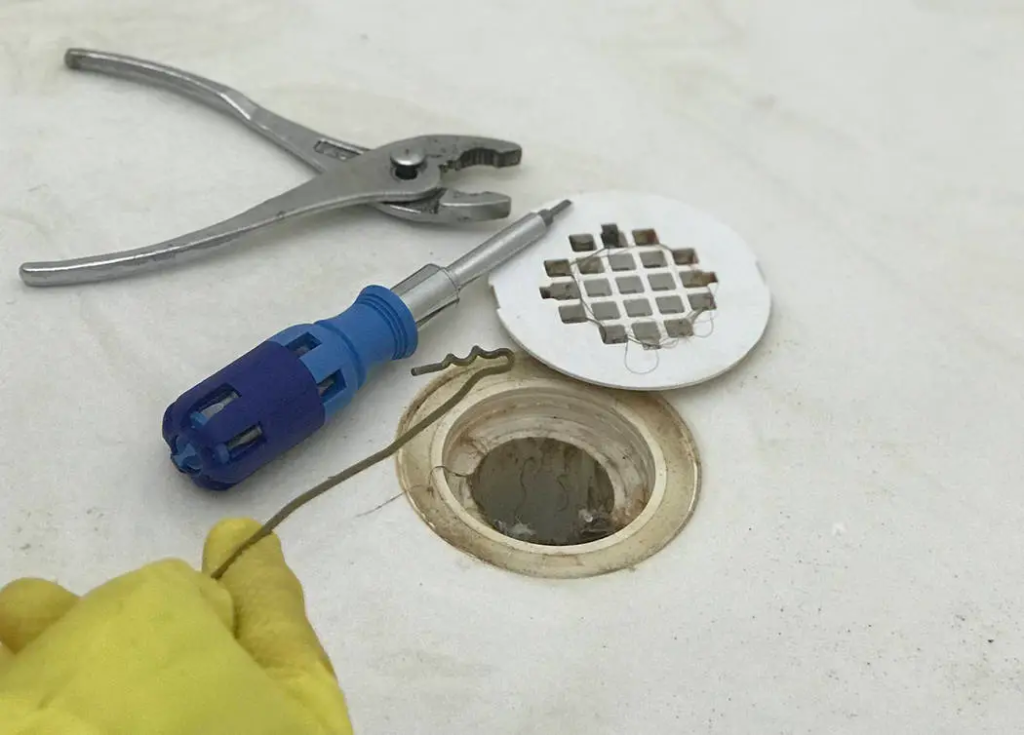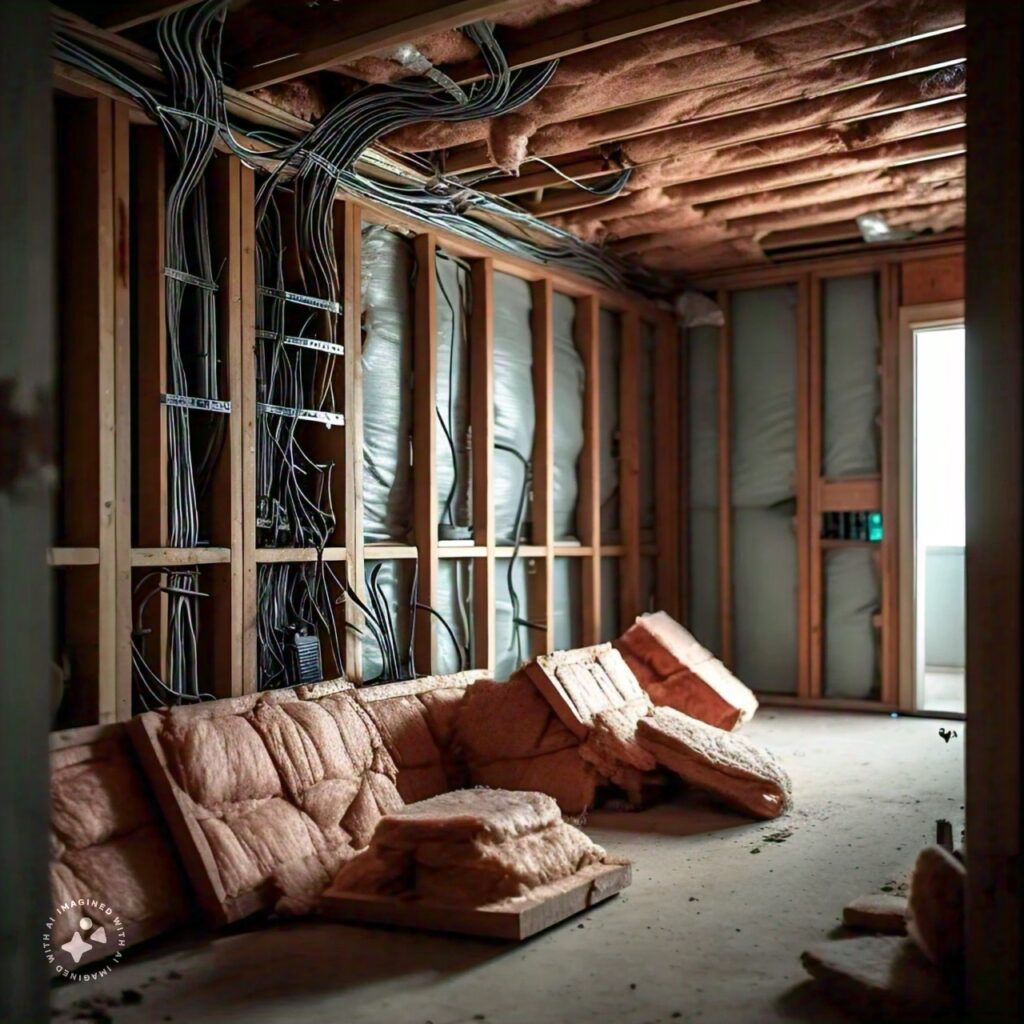Living in Singapore, encountering a clogged bathroom sink can be quite a hassle, especially in a bustling city where time is of the essence. However, fear not, as there are simple yet effective ways to tackle this common household issue.
But before talking about the solutions. Understanding the causes of bathroom sink and their quick fix would be helpful, so let’s first quickly address them.
Understanding Why Sinks Get Clogged and How to Fix Them
Hey there! Ever wonder why sinks in our homes get all clogged up sometimes? Well, it’s because of a few sneaky reasons. Let me break it down for you and tell you what we can do about it.
1. Hair Buildup:
- Why it Happens: You know how hair falls out when we shower or brush our hair? Well, that hair can go down the drain and get stuck. Over time, it clumps together with other stuff, making a big blockage.
- How to Fix it: Try using a special tool called a plumbing snake or pour a mix of baking soda and vinegar down the drain. They can help break up the hair and make it go away.
2. Soap Residue:
- Why it Happens: Soap we use in the sink leaves behind a gooey residue. It builds up over time, making it hard for water to flow smoothly.
- How to Fix it: Every now and then, pour hot water down the drain. It helps melt away the soap. Or, use a cleaner with good enzymes to eat up the soap gunk.
3. Toothpaste and Tiny Things:
- Why it Happens: Sometimes, stuff like toothpaste caps or small things fall into the sink. They can get stuck and block the drain.
- How to Fix it: Be careful and try not to drop things in the sink. If something does fall, use a plunger to push it out or a tool to grab it.
4. Hard Water Stuff:

- Why it Happens: The water in Singapore has minerals in it, and they can stick to the pipes over time. This makes the pipes narrower and clogs them.
- How to Fix it: Mix vinegar with water and pour it down the drain. It helps to dissolve those mineral deposits. Also, you can use a filter or softener to make the water softer.
5. Greasy Stuff:

- Why it Happens: Grease and oil from cooking can go down the drain. When they cool down, they stick to the pipes and cause blockages.
- How to Fix it: Don’t pour grease down the sink! Instead, let it cool in a container and throw it away. Also, use hot water and soap to wash away any grease left in the sink.
9 Effective Ways to Unclog a Bathroom Sink in Singapore
1. Boiling Water Method

This method is one of the simplest and most environmentally friendly ways to unclog a bathroom sink. Begin by boiling a kettle or pot of water. Once the water reaches a rolling boil, carefully pour it down the clogged sink drain in two to three stages, allowing a few seconds between each pour. The hot water will help dissolve and dislodge any grease, soap scum, or debris that may be causing the clog.
Pros:
- Environmentally friendly and cost-effective.
- Requires minimal effort and readily available materials.
- Can help prevent future clogs by clearing buildup in the pipes.
Cons:
- May not be effective for more stubborn clogs caused by solid objects or mineral deposits.
- Care must be taken when handling boiling water to avoid burns or scalds.
2. Baking Soda and Vinegar Solution

This age-old household remedy is highly effective in unclogging bathroom sinks without resorting to harsh chemicals. Start by pouring about half a cup of baking soda down the drain, followed by an equal amount of white vinegar. The mixture will fizz and bubble, working to break down any organic matter causing the blockage. Allow the solution to sit in the drain for at least 30 minutes, then flush it out with hot water.
Pros:
- Safe for both the environment and your plumbing.
- Easily accessible ingredients found in most Singaporean households.
- Helps eliminate odors and disinfects the drain.
Cons:
- May require multiple applications for stubborn clogs.
- Works best as a preventative measure rather than a solution for severe blockages.
3. Plunger Method

For more stubborn clogs that resist the above methods, using a plunger can provide the necessary force to dislodge the obstruction. Begin by filling the sink with enough water to cover the bottom of the plunger. Place the plunger over the drain and firmly press down, creating a seal. Push and pull the plunger vigorously for about 30 seconds, then release. Repeat this process several times until the water begins to drain freely.
Pros:
- Effective for dislodging solid obstructions such as hair or small objects.
- Can be used on both sink and bathtub drains.
- Requires no special tools or chemicals.
Cons:
- May not work for clogs located deep within the pipes.
- Can be messy and require some physical effort.
4. Wire Hanger Method

Sometimes the culprit behind a clogged sink is a solid obstruction that needs to be physically removed. A wire hanger can be fashioned into a makeshift tool for this purpose. Straighten out the hanger and create a small hook at one end. Carefully insert the hooked end into the drain and maneuver it around to hook onto any debris or hair causing the blockage. Once hooked, gently pull the obstruction out of the drain. Be cautious not to push the clog further into the pipe.
Pros:
- Effective for removing solid obstructions like hairballs or foreign objects.
- Requires only a basic wire hanger, readily available in most households.
- Can provide immediate results without waiting for chemical reactions.
Cons:
- May not reach clogs located deep within the pipe.
- Requires patience and precision to avoid causing damage to the pipes.
5. Enzyme Drain Cleaner

Enzyme drain cleaners are a more natural and environmentally friendly alternative to chemical-based cleaners. These cleaners contain enzymes that break down organic matter, such as hair, soap scum, and food particles, without causing damage to pipes or the environment. Simply pour the recommended amount of enzyme cleaner down the drain and allow it to work overnight. In the morning, flush the drain with hot water to clear away the dissolved debris.
Pros:
- Safe for all types of pipes, including PVC and metal.
- Continues to work over time, preventing future clogs.
- Environmentally friendly and biodegradable.
Cons:
- Requires patience as it may take several hours or overnight to see results.
- Not as effective for immediate relief of severe clogs.
6. Plumbing Snake or Auger
For particularly stubborn clogs that resist other methods, a plumbing snake or auger can be employed to physically break up and remove the obstruction. These tools consist of a long, flexible metal cable with a corkscrew or blade attached to one end. Insert the snake into the drain and rotate it clockwise while applying gentle pressure. Continue feeding the snake into the drain until you encounter resistance, then rotate and retract it to dislodge the clog.
Pros:
- Effective for clearing tough clogs located deep within the pipes.
- Versatile tool that can be used on sinks, showers, and toilets.
- Provides immediate results for severe blockages.
Cons:
- Requires purchase or rental of a plumbing snake, which may not be readily available to all homeowners.
- Can be difficult to use for those without experience, risking damage to pipes if used incorrectly.
7. Hot Water and Salt Solution

This simple yet effective method utilizes the combined power of hot water and salt to break down and flush away stubborn clogs. Begin by boiling a pot of water, then mix in a generous amount of table salt until it dissolves. Carefully pour the hot saltwater solution down the clogged drain, allowing it to penetrate and loosen the blockage. The salt helps to break down grease and organic matter while the hot water provides additional flushing power.
Pros:
- Requires only common household ingredients.
- Salt acts as a natural abrasive, aiding in the removal of debris.
- Hot water helps to melt away grease and soap residue.
Cons:
- May not be effective for severe or compacted clogs.
- Can take some time to see results, especially for larger blockages.
8. Wet/Dry Vacuum Method

A wet/dry vacuum can be a powerful tool for unclogging stubborn sinks by creating suction to dislodge and remove blockages. First, set the vacuum to the wet setting and ensure the hose is securely attached. Place the nozzle directly over the drain opening, creating a tight seal, and turn the vacuum on to its highest setting. The suction created by the vacuum can help to pull out debris and break up clogs. After several minutes of suction, remove the vacuum and flush the drain with hot water.
Pros:
- Provides strong suction power to dislodge stubborn clogs.
- Can be used on both wet and dry surfaces.
- Versatile tool useful for various household tasks.
Cons:
- Requires access to a wet/dry vacuum.
- May not be as effective for clogs located deep within the pipes.
9. Professional Plumbing Service

In cases where DIY methods fail to resolve the issue or if the clog is particularly severe, it may be necessary to enlist the help of a professional plumber. Professional plumbers have the expertise, experience, and specialized equipment to diagnose and address complex plumbing problems effectively. They can use tools such as hydro-jetting or drain cameras to identify and remove stubborn clogs, ensuring long-term solutions for clogged sinks.
Pros:
- Guaranteed solution for even the most challenging clogs.
- Saves time and effort compared to DIY methods.
- Professional plumbers can provide expert advice on preventing future clogs.
Cons:
- May incur additional costs compared to DIY methods.
- Availability of plumbers may vary, especially during peak times or emergencies.

